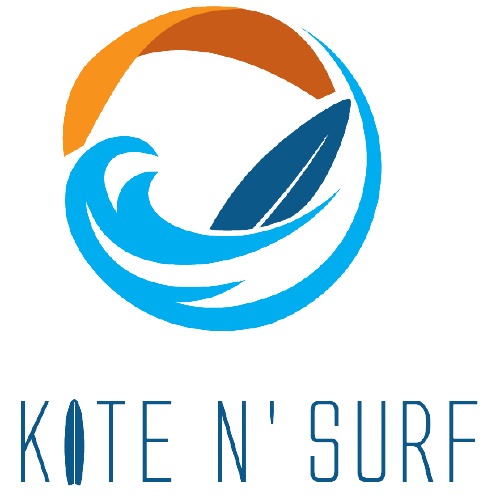History Of Kitesurfing That Every Kitesurfer Should Know
If you combine a flying kite and surfing, what do you get?
Kite Surfing!
If your only idea of kitesurfing is that peculiar photo of Sir Richard Branson kitesurfing off an island with those supermodels in their birthday suits, then you’re missing out on something. Kitesurfing is more than that!
First off, you have to differentiate Kitesurfing from Kiteboarding. Wait a minute. Are they supposed to be the same?
Let me explain. Generally, most people unwittingly use both terms in reference to the same sport. And apparently, there’s a slight technical difference between the two.
Kiteboarding vs Kitesurfing
Kitesurfing is actually a specific style of kiteboarding. What makes it different is that it uses a directional board – a surfboard that is designed specifically for riding the waves.
On the other hand, Kiteboarding is an extreme water sport that combines all the aspects of wakeboarding, windsurfing, paragliding, skateboarding, snowboarding, and even gymnastics.
With that said, do not dwell too much on these terminologies. No one will get mad at you when you say “kiteboarding” when you actually mean “kitesurfing”, or the other way around.
Who introduced kitesurfing?
Let’s look back and learn more about the history of kitesurfing. Back in the 1800s, an English schoolteacher named George Pocock had this idea about carts and ships being propelled by big kites.
In 1826, he patented his invention named “Charvolant”, a kite-drawn carriage. He applied the principles that he discovered to carts and boats and both were able to turn and sail upwind. He used a four-line control system which is the same system that is commonly used today. What’s interesting is that the kites can be flown for a sustained period of time.
In 1903, a guy named Samuel Cody who is known for his “Man-lifter War Kites”, succeeded in crossing the treacherous English Channel. Instead of using a sailboat, he crossed the channel in a Berthon boat that is being pulled by one of his kites (I’m sure he had so much fun!).
Fast forward to 1977. Gijsbertus Adrianus Panhuise, a Dutchman with a very interesting name, was the first person to patent kitesurfing. The patent description says:” A water sport, where you are pulled forward by a controllable kite on a buoyant board”. His invention did not end up with any commercial success. However, most people consider him the pioneer in the idea of kitesurfing.
What happened next is another milestone in the development of kitesurfing…
In the early 80s, A German named Dieter Strasilla developed a parachute-skiing. Later on, he perfected a kite skiing system with the use of self-made paragliders and a ball-socket swivel. This allowed the pilot to kite-sail uphill and upwind with the ability to take off into the air (Jump) at will.
Strasilla along with his Swiss friend, Andrea Kuhn integrated his invention with surfboards and land buggies. In 1979, Strasilla patented an invention that describes the first use of an inflatable kite that is designed for kitesurfing.
Legaignoux Brothers
In the same period, during the late 70s to early 80s, French brothers Bruno Legaignoux and Dominique Legaignoux were also developing their own version of kites. The two brothers grew up with a passion for water sports since the age of 10. They made a name for themselves by winning the French National Junior Dingy Sailing Championship in 1979.
And that was just the beginning…
In 1984, Legaignoux brothers saw the future of “speed sailing”. They began working on solving issues like launching the stack of kites, getting them to go upwind at higher levels, and relaunching from waters. Bruno and Dominique experimented with kite propulsion as they went around the world cruising on a sailboat. No one at that time had the idea on how to relaunch a kite. They patented their own inflatable kite design in November of the same year.
The year 1985 was very significant as the brothers demonstrated a kite that would allow them to sail with water skis at the Brest International Speed Week. This demonstration won them the Ingenuity Prize award.
Here’s the interesting part…
The kites that we are flying today actually originated from the brother’s U.S.A. patent for a Propulsive Wing with Inflatable Armature. Apparently, surfing using the wind power at that time still did not gain enough momentum to get the interest of manufacturers.
This did not discourage the brothers. At the Funboard World Cup in 1987, Bruno made a successful demonstration of the biggest wing ever produced. He made tremendous improvements to his invention by making more stable and lighter wings. The design was eventually used by different companies to develop their own.
Bill Roeseler and his son Cory Roeseler
Father and son tandem Bill and Cory Roeseler developed the “KiteSki” system. It is a water ski that is powered by a two-line delta style kite. They made it available commercially in 1994. The kite has a rudimentary re-launcher system and has the capability to go upwind.
Many considered Cory Roeseler as the founder of modern kitesurfing. In the latter part of the 90s, Cory’s ski design transformed into a single board which is almost identical to a surfboard.
From Flysurfing to Kitesurfing
As years went by, Kitesurfing started to become popular among water sports enthusiasts. In 1996, Manu Bertin and Laird Hamilton popularized kitesurfing off the coast of Maui in Hawaii. Their demonstration of kitesurfing attracted more followers to this growing sport.
Meanwhile, in Florida, Raphael Baruch tried to experiment riding on windsurfing boards with various foil kites. Eventually, they change the name of the sport from flysurfing to kitesurfing.
WIPIKA Kite
The year 1997 was great for the Legaignoux Brothers. They were able to develop and sold their revolutionary “Wipika” kite design. It has the structure of preformed inflatable tubes with a simple bridle system on its wingtips. The design was very helpful during water relaunch.
In that same year, Raphael Salles and Laurent Ness developed the specialized kiteboards. A year later, kitesurfing became a popular extreme water sport. It was distributed and taught in different schools and shops worldwide.
In 1998, they held the first kitesurfing competition in Maui. Flash Austin beat all other competitors to win in the event.
Robbie Naish and Don Montague approached Legaignoux brothers and proposed an agreement about licensing the kite patent. Within a year, Bruno was able to design about 60 kites under eight different brands.
The French duo moved to the Dominican Republic in the year 2000 and continued with the development of their kites. Finally, in the year 2004, they demonstrated their Bow Kite Design to Takoon and Cabrinha. A year after, the first batch of Bow Kites was released on the market.
The new design provided up to 100% de-power which means they are safer to use for beginners and less skilled kitesurfers.
International Kiteboarding Association
April 2008 marked the year when the International Kiteboarding Association was founded.
The organization covers five disciplines with individual rankings and world championships:
- Freestyle
- Course racing
- Wave riding
- Kite cross
- Speed
KITESURFING TODAY
By 2013, many different kitesurfing styles have been introduced to the market. They include wakestyle, course racing, downwinders, wave riding, wakeskate, kite cross, jumping, and airstyle.
To accommodate all these different kitesurfing styles, manufacturers were able to make a variety of kite types that include C-kites, Delta kites, Hybrid kites, Bow kites, Foil kites and light wind kites and all those kite are available from Cabrinha
Over the years, many improvements have been made to make kitesurfing safe and easy to maneuver. This has significantly reduced the learning curve. It used to take months to learn kitesurfing. But now, it’s just a matter of days. Really cool right?
However, that doesn’t mean you no longer need to undergo kite surfing lessons. You still have to learn the basics to avoid any accidents. It is highly recommended that you enroll in a kite surfing school in Dubai to learn the sport. For more details, get in touch with our team and we will help you get started. For more info about our kite surfing lessons in Dubai you can visit our kite surf shop in Dubai located at Nessnass Beach or you can reach out to us by phone +971558006363 or by email [email protected]

